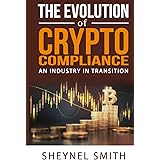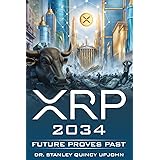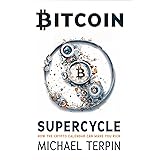Have you ever watched the news, seen major economic events unfold, and wondered how they truly impact your investments? Perhaps you’ve heard whispers of new financial technologies changing the game. The video above, featuring insights from the Token2049 conference, dives deep into this exciting intersection. It explores how global events, like a looming US government shutdown, influence the dynamic world of digital assets. Yet, it also highlights the incredible potential of innovations like prediction markets, tokenization, and stablecoins. This article expands on these compelling discussions, offering a beginner-friendly guide to understanding the future of finance.
Understanding Digital Assets in a Shifting Economic Climate
Major events can shake traditional markets. We recently saw concerns about a US government shutdown. This threatens thousands of federal jobs. It also risked key services. However, investors often look beyond immediate turmoil. They assess broader market strength. Asian equities, for example, rallied amid AI optimism. They largely ignored shutdown uncertainty. This highlights a clear trend. Investors seek growth opportunities. They focus on sectors showing strong underlying fundamentals. In contrast, the crypto market sometimes moves differently. Bitcoin specifically received a boost. Uncertainty around the shutdown played a role. This shows how digital assets can act as alternative investments. They respond to different economic signals.
Market Sentiment and Key Indicators
Market sentiment is crucial. The VIX, a volatility index, stayed at historically low levels. This contrasts with a spike seen during the 2018 shutdown. Back then, equities were already falling. Today, stocks are in a strong position. This creates a different environment. Some sectors might face challenges. But broad damage to equities seems unlikely. Unless it leads to a major labor market collapse. This optimism supports the idea. Any problems might just be buying opportunities. Especially if the shutdown is short. Vice President J.D. Vance predicted a quick resolution. Moderate Democrats show signs of cracking. This suggests a potential political shift.
The Power of Prediction Markets
Prediction markets offer unique insights. They act as a new source of information. These platforms allow users to bet on real-world events. For instance, Polymarket users bet on the shutdown duration. They saw a 48% chance of it lasting 4-9 days. A 29% chance existed for 10-29 days. Only 17% expected over a month. These markets aggregate collective intelligence. They can often provide better forecasts. This contrasts with expert opinions. Robinhood, a leading platform, is betting big on this. Their prediction markets business shows immense growth. A Piper Sandler report showed a $200 million annualized revenue run rate. This makes it one of Robinhood’s fastest-growing segments. It is attracting global interest. Countries outside the US are exploring their own strategies. This indicates a worldwide shift. Prediction markets are disrupting traditional news sources. They also challenge conventional wagering. They offer active trading with price discovery. This creates a distinct financial instrument.
Navigating Criticism and Regulatory Challenges
New innovations often face scrutiny. Prediction markets blur lines. Some critics see them as gambling. Others view them as finance. Regulators are grappling with categorization. Is it trading, wagering, or news? The reality is it possesses properties of all three. There is no traditional “house” edge. Trades happen on an exchange. This makes them different. They hold potential to disrupt multiple industries. Despite this, regulation is a key hurdle. Different countries have varied approaches. Yet, the global reception is overwhelmingly positive. This shows a promising future. The market is evolving rapidly. It’s becoming a significant accelerant. Especially for the crypto ecosystem outside the US.
Tokenization: The Next Frontier in Finance
Tokenization is a “freight train.” It will eat the entire financial system. This bold statement comes from Vlad Tenev of Robinhood. However, he sees this as a positive change. Tokenization means representing real-world assets on a blockchain. These assets can be anything. Stocks, bonds, real estate, art—all can be tokenized. This process democratizes access. Assets typically for high-net-worth individuals become available. The mass market gains new opportunities. Illiquid assets become more liquid. Transaction fees can be significantly reduced. Robinhood is at the forefront. They launched stock tokens in the EU. These are tokenized versions of top names. They also demonstrated tokenizing private companies. OpenAI and SpaceX were examples. This sparked massive interest. Large institutions wanted to get involved. They sought ways to provide liquidity. This highlights the readiness for this shift.
Real Estate and Other Assets on the Blockchain
Real estate tokenization holds massive potential. It is not a technology barrier. The capability exists now. Tokenizing private companies is similar. You create a corporation to acquire assets. This structure can apply to real estate. Costs can be minimized. Revenues like rent are tracked. The technology makes it possible. Residential and commercial properties can be tokenized. This opens high-quality real estate to many. Previous attempts faced issues. However, current blockchain tech offers new solutions. Regulation remains the main question. What are the right products for customers? Wall Street incumbents are slower to adopt. They have legacy infrastructure. They also need to bring along many counterparties. Firms like Robinhood are building their own infrastructure. This allows them to move faster. They are at the frontier of this massive shift.
Stablecoins: Bridging Traditional and Digital Finance
Stablecoins are gaining immense traction. They are the new way to send money. They aim to be as easy and secure as sending an email. Heath Tarbert, President of Circle, sees major growth. He predicts stablecoins could reach $3 trillion. They are currently around $300 billion. This massive jump is driven by several factors. Stablecoins are the main medium of exchange on digital asset exchanges. They are also decoupling from crypto markets. Multinational companies use them for cross-border payments. Individuals use them for remittances. They also serve as a store of value. USDC, issued by Circle, circulates in over 185 countries. It is backed one-for-one. High-quality liquid assets secure it. Mostly US treasuries back it. This makes it a reliable asset. In contrast, not all stablecoins are truly stable. The failure of Terra Luna showed this risk. Uniform global standards are crucial. Circle is pushing for these standards. This ensures safety and security for everyday users.
Global Adoption and Regulatory Frameworks
Countries are racing to embrace stablecoins. China has launched its digital yuan. This comes after banning cryptocurrencies. Circle welcomes this development. More stablecoins in other currencies will grow the market. They expect increased conversion to US dollars. This makes the overall pie bigger. Stablecoins are becoming geo-strategic components. Nations want their currency on-chain. This ensures they play a role in Web3. The US passed the Genius Act. This created a federal framework for stablecoins. Europe has the MiCA framework. Singapore recently implemented its ordinance. These regulations provide clarity. They are helping integrate stablecoins. This allows them to become part of the traditional financial sector. The decoupling from crypto markets will continue. Companies want faster, cheaper transactions. Waiting five days and paying high fees is outdated. Stablecoins offer a 21st-century solution.
Crypto Market Dynamics and Future Outlook
The crypto market experiences ups and downs. A recent sell-off wiped out $300 billion. However, this is seen as a “pit stop.” Demand for cryptocurrencies remains strong. User growth is robust. Institutional demand for Bitcoin is very high. Innovation continues with many new projects. Charles Hoskinson, co-founder of Ethereum and Cardano, is optimistic. He predicts Bitcoin could reach $250,000. This might happen by the middle of next year. The Clarity Act should bring institutional players. The “Magnificent Seven” will integrate crypto. Banks are also coming in due to the Genius Act. This brings different capital. It shifts market dynamics. Retail-driven cycles become less dominant. The market needs to decide its identity. Is it a tech stock? Is it a counter-cyclical asset? This identity will solidify as institutions mature. Nevertheless, too much money is entering. Supply is limited. This points towards a bull market.
Cardano’s Ecosystem and Blockchain’s Broader Role
Cardano is making waves. Hoskinson believes it will “break the Internet.” Its ecosystem boasts millions of users. It offers strong decentralization. It has run for eight years straight. It has never been hacked or gone down. This foundational reliability is key. The US government recognizes this. Cardano is also deflationary, like Bitcoin. It is considered a blue-chip asset. The industry has largely “won.” Regulators are engaging on favorable terms. The challenge now is reconciliation. Bringing the legacy and DeFi worlds together is paramount. This creates next-generation finance. Everyone has a role. Bitcoin, Ethereum, and Cardano all contribute. Compliance and privacy are next. Selective disclosure for private smart contracts is vital. This is the “last mile problem.” Once solved, crypto systems will become superior. They offer more liquidity and efficiency. They will largely replace legacy systems. This shift is expected within three to five years.
Digital Asset Treasuries (DATs) and Long-Term Investment
Wall Street is always innovating. They find new things to securitize. Digital Asset Treasuries (DATs) are the latest trend. However, some valuations are inflated. DATs are moving from short-term trades to long-term investments. Early DATs focused on quick multipliers. There was little connection to the underlying asset. Now, they must create value. They must think like blockchain development companies. This means focusing on three, five, or ten-year goals. DATs can index an entire ecosystem. This includes assets and partnerships. They provide financing and liquidity. The challenge is responsible money placement. Regulators, like the SEC, will step in. They will ensure beneficial practices for investors. Timing the market in crypto is risky. Black swan events are common. Companies collapse. People go to jail. Regulatory events or macro factors cause volatility. Instead, a long-term view is better. Like Warren Buffett, focus on fundamental bets. Bet on the technology’s core benefits. Zero-knowledge settlement, 24/7 liquidity, automated regulation—these are the future. Those making these bets will do very well. The Midnight project from Cardano will also offer rational privacy. This will further attract Wall Street. It will help traditional finance embrace digital assets. This creates an environment where everyone can be a friend, fostering collaboration and growth.







